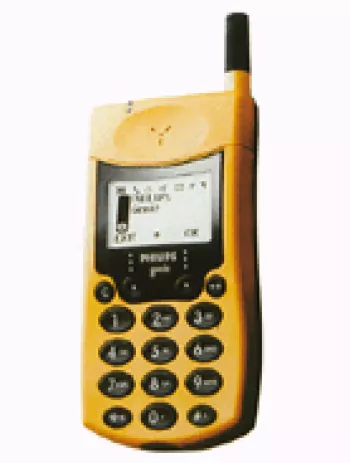
Overview of the Philips D900
The Philips D900, launched in 2010, marked Philips' entry into the smartphone market with unique features and specifications for its time. It was released in the third quarter of the year and captured the attention of tech enthusiasts with its distinctive integration of Microsoft Windows Mobile OS. The device, although now discontinued, played a role in paving the way for advancements in mobile technology.
Design and Build
With dimensions of 101.2 x 60.5 x 15 mm, the Philips D900 features a compact and robust design, suitable for everyday handling. Weighing 147.8 grams, it offers a solid build with a mini-SIM configuration. This design aimed at providing users with a straightforward and durable phone. The physical build supports easy carriage and one-handed use.
Display
The device boasted a 2.8-inch TFT resistive touchscreen that supported 65K colors. The display resolution of 240 x 320 pixels provided clarity for everyday tasks despite not being on par with modern high-definition displays. The screen-to-body ratio of approximately 39.7% offered a comfortable viewing experience for the era.
Platform and Performance
Running on Microsoft Windows Mobile OS, the Philips D900 offered a blend of productivity and connectivity features. While this OS might not match the performance of contemporary systems like Android or iOS, it provided a stable platform for business and day-to-day applications during its prime. The system interface was crafted to cater to users familiar with Windows-based environments.
Memory and Storage
The Philips D900 included a microSD card slot, allowing users to expand storage for multimedia and documents. This feature was an essential aspect, particularly during a time when internal storage capacities were limited.
Camera Capabilities
The D900 was equipped with a 2 MP main camera, capable of capturing standard resolution images and videos at 352x288 pixels. Although this might seem low by today's standards, it was suitable for casual photography and quick sharing among peers. Notably, the device did not include a front-facing selfie camera, reflecting the lesser emphasis on selfies at that time.
Audio and Connectivity
For sound, the D900 came with a built-in loudspeaker but was devoid of a 3.5mm headphone jack — a feature that has made a notable resurgence in various modern devices. For connectivity, it supported Wi-Fi 802.11 b/g, Bluetooth 2.1 with A2DP, and GPS with A-GPS for navigation. USB connectivity was facilitated through a miniUSB 1.1 port, allowing for data transfer and charging.
Network Specifications
Network technology for the D900 included CDMA and EVDO, with support for 2G and 3G bands specifically in the CDMA 800 and 1900 ranges. The network capabilities provided adequate speed and reception quality, essential for communication-centric devices of the era.
Battery Life
Powering the device was a removable Li-Ion battery, designed to offer reasonable stamina given the period's standards for battery technology. The removable aspect allowed users to carry spare batteries for prolonged usage during travel or limited access to charging facilities.
Additional Features
Complementary features of the Philips D900 included a WAP 2.0/xHTML, HTML browser, which met the basic needs for internet browsing. Although limited in today's context, it enabled access to essential online content. The device came in a classic Black color, adding to its sleek and professional appearance.
Conclusion
The Philips D900, despite being discontinued, serves as a reminder of the exciting trajectory of smartphone evolution. Its balance between functionality and design provided an accessible mobile device that catered to the growing demands for connectivity, storage, and multimedia access at the time. As technology continues to advance, devices like the D900 remain significant for their contributions to innovation in mobile communications.
Key Features of Philips D900
- Supports CDMA / EVDO technology with CDMA2000 1xEV-DO for 3G.
- Compact dimensions of 101.2 x 60.5 x 15 mm and weighs 147.8 g.
- 2.8 inches TFT resistive touchscreen with 65K colors.
- Runs on Microsoft Windows Mobile OS.
- Expandable storage via microSD card.
- Includes a 2 MP main camera.
- Wi-Fi 802.11 b/g and Bluetooth 2.1 with A2DP for connectivity.
- GPS and A-GPS support for positioning.
- Equipped with a removable Li-Ion battery.
Disadvantages of Philips D900
- Old CDMA technology limits network compatibility in many regions.
- Discontinued, which makes it difficult to find support and replacement parts.
- Heavy weight of 147.8 g makes it less portable compared to modern smartphones.
- Small display size with low resolution and TFT resistive touchscreen, offering poor visual quality and limited touch responsiveness.
- Low-quality 2 MP main camera with limited video capabilities.
- Lacks a front-facing selfie camera.
- No 3.5mm audio jack, limiting connectivity for audio devices.
- No FM radio functionality.
- Outdated Microsoft Windows Mobile OS, with limited app support and updates.
- Limited internal storage options, reliant on microSD card slot for expansion.
- Older Bluetooth version (2.1) limits compatibility and features with modern devices.
- No advanced sensors, reducing functionality for modern applications.


View Also
More Phones
All Rights Reserved +14266 Phones © Mobilawy 2025

























